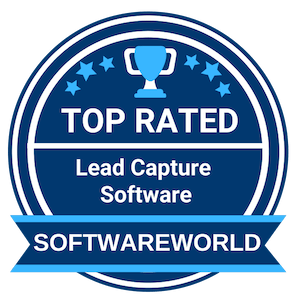If your business is like many others, your conversion rate on your website is low. In most industries, a drop-off rate of 70-90% is expected. If you are selling something complex or specialized, you may be lucky to convert 1% of your visitors. In other words, as many as 99% of your visitors may be leaving your site without buying anything and with no intention of returning.
The question that most business teams ask is how they can increase their conversion rate. However, the reality is that most people are not even arriving at your website, intending to buy. That doesn’t mean they can’t become customers, though. You just need to do a little more work. Focusing on how you can move more of those visitors through the sales funnel to becoming hot leads should be your starting point.
What Is a Lead Capture Strategy?
Again, most people searching on the internet are not planning to find a product then immediately buy it. They are researching their potential purchase. After doing that research, they may take a little time to evaluate before making a purchase. In many cases, they may simply drop the matter and never buy anything.
In short, expecting your website to convert sales consistently on its own may be asking too much. Instead, you probably need to get your sales team involved.
By converting your visitors to leads for your salespeople to contact, you are making your initial ‘micro’ conversion easier. You aren’t asking them to buy anything, just to give up some contact information.
A lead capture strategy is your method of getting potential leads to send contact information to your team. With this information, your salespeople can develop them as leads and potential future sales. Often, a lead capture strategy includes offering something in exchange for the lead’s details. For example, you may have a form for downloading a whitepaper that contains fields for lead capture.
The Sales Funnel
As you likely already know, the sales funnel is a simple model for explaining how someone goes from not knowing about your product to becoming a customer. It may be a somewhat cliché way of looking at sales. However, it is also relevant in a lot of circumstances.
While the stages of awareness, information, evaluation, and purchase are generic, they are a good rough description of the purchase process. Thinking about lead capture in terms of these stages can help you to develop a more effective strategy.
As mentioned above, you will have a hard time converting website visitors into customers directly. This is because most of them are only in the information or evaluation phases of the funnel. They aren’t yet ready to buy. However, they could be ready in the future if you meet them where they are.
Capturing Leads at the Beginning of Their Buying Journey
Many visitors to your website may be at the beginning of their buying journey. They know that they have a problem to solve but are not yet familiar with the possible solutions.
Visitors in this stage are not searching for specific products or even considering a purchase. Instead, they are looking for more information and guidance on their problems.
Consider the issues that your products or services help solve. For example, if you sell some accounting software, visitors may be having trouble capturing all their expense information.
The key to capturing leads at this stage is to offer something helpful for people who are only just beginning to find solutions for their problems. Returning to the accounting software, you could provide a whitepaper on best practices for expense authorization. It is relevant to the problem that the visitor is currently addressing. You aren’t expecting them to switch their operations to your solution. You are just asking them to learn more.
Lead Capture in the Middle of the Funnel
Later in the funnel, you may have visitors aware of your solutions currently researching and evaluating one or a few options. At this stage, they are still not ready to talk about pricing or make a purchase. However, they are more interested in how your product or service could fit into the solution to their problem.
At this stage, more in-depth data is useful to visitors. For example, you may have a more detailed report on a study. For a marketing solution, you may have a report about the typical return on investment for different promotional channels.
Another option is access to a tool that would be helpful to leads at this stage in the funnel. The marketing brand may provide an ROI calculator.
Strategies for Lead Capture at the End of the Sales Journey
As potential buyers reach the end of the sales funnel, they are looking for detailed information about your product. They are down to one or two possibilities and want some final data to help confirm their decision.
At this stage, you can offer them reports about your solutions. For example, this may be information on how your product helps save businesses money. Another option is to provide testimonials or reviews that provide social proof of your product’s benefits. Free trials and demos are also extremely valuable at this stage.
Your visitors are interested in these types of answers because they have already learned about ways to solve their problems and how your products may fit into those solutions. With a fully considered lead capture strategy, you can help leads at every stage of the sales funnel.
Live Lead Response and Qualification From HelloSells
The right tool-set and services can help you capture and convert more leads at every funnel stage.
HelloSells provides powerful tools and services to help brands like yours be more responsive to website visitors’ needs.
We provide 24/7 live response to calls, form responses, web chat, click-to-call, and other valuable lead response services. With HelloSells, you can ensure that you are consistently engaging and capturing information on leads. Check out all our services and see how they could fit into your lead capture strategy.
Call us at 800-550-4955 to learn more.

